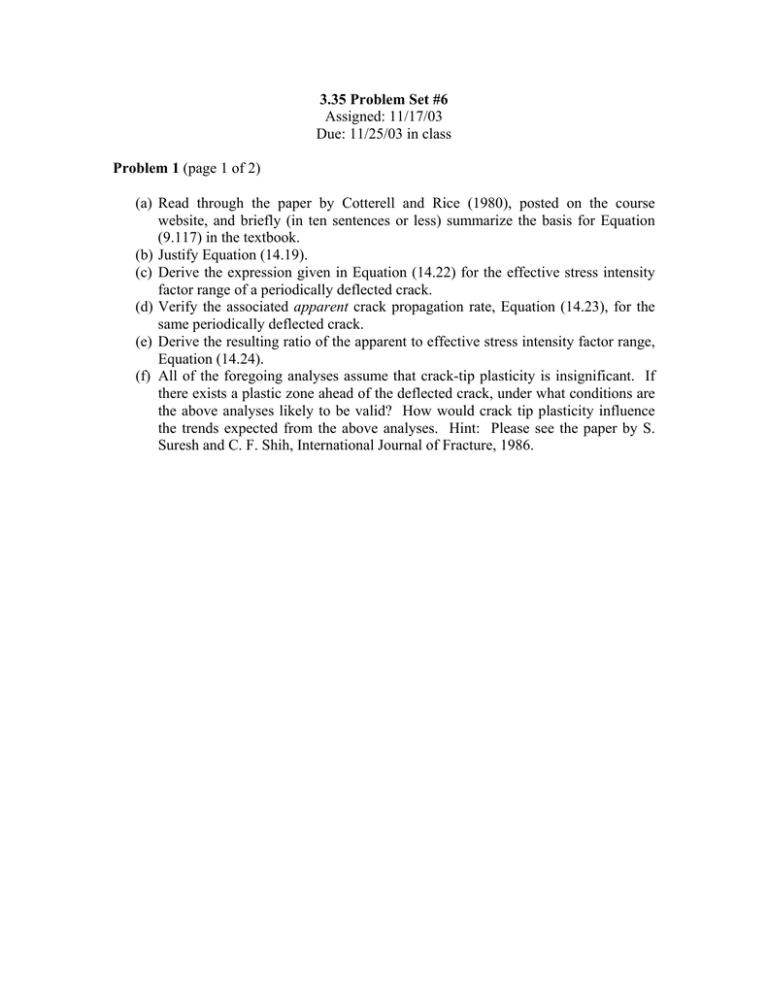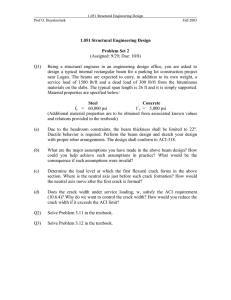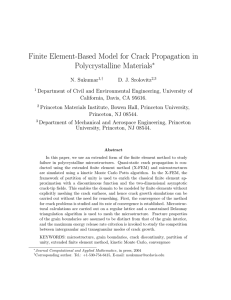3.35 Problem Set #6 Problem 1 Assigned: 11/17/03 Due: 11/25/03 in class
advertisement

3.35 Problem Set #6 Assigned: 11/17/03 Due: 11/25/03 in class Problem 1 (page 1 of 2) (a) Read through the paper by Cotterell and Rice (1980), posted on the course website, and briefly (in ten sentences or less) summarize the basis for Equation (9.117) in the textbook. (b) Justify Equation (14.19). (c) Derive the expression given in Equation (14.22) for the effective stress intensity factor range of a periodically deflected crack. (d) Verify the associated apparent crack propagation rate, Equation (14.23), for the same periodically deflected crack. (e) Derive the resulting ratio of the apparent to effective stress intensity factor range, Equation (14.24). (f) All of the foregoing analyses assume that crack-tip plasticity is insignificant. If there exists a plastic zone ahead of the deflected crack, under what conditions are the above analyses likely to be valid? How would crack tip plasticity influence the trends expected from the above analyses. Hint: Please see the paper by S. Suresh and C. F. Shih, International Journal of Fracture, 1986. Problem 2 The experimental crack growth data below was collected from a nanocrystalline material (average grain size = 40 nm), subjected to far field mode I cyclic loading. The crack path for this material was perfectly linear (undeflected). Suppose the grain size is increased into the microcrystalline regime (average grain size greater than 1 µm), leading to crystallographic crack path deflection, as depicted in Figure 1. On the same graph, plot the crack growth data for the initial nanocrystalline material, and the predicted crack growth behavior for the microcrystalline material, assuming values of χ equal to 0.1, 0.25, and 0.75. ∆K (MPa m1/2) da/dN (mm/cycle) 2.573 2.607 2.6585 2.7462 2.8552 3.0265 3.2287 3.4445 3.7225 3.9713 4.2642 4.6381 4.98 5.3474 5.7415 6.125 6.4088 6.9707 7.4366 2.32E-08 3.68E-08 5.84E-08 9.27E-08 1.47E-07 2.24E-07 3.42E-07 5.22E-07 8.27E-07 1.21E-06 1.92E-06 3.05E-06 4.48E-06 7.10E-06 1.04E-05 1.42E-05 1.92E-05 2.93E-05 4.48E-05 θ 0.2 mm θ Figure 1







